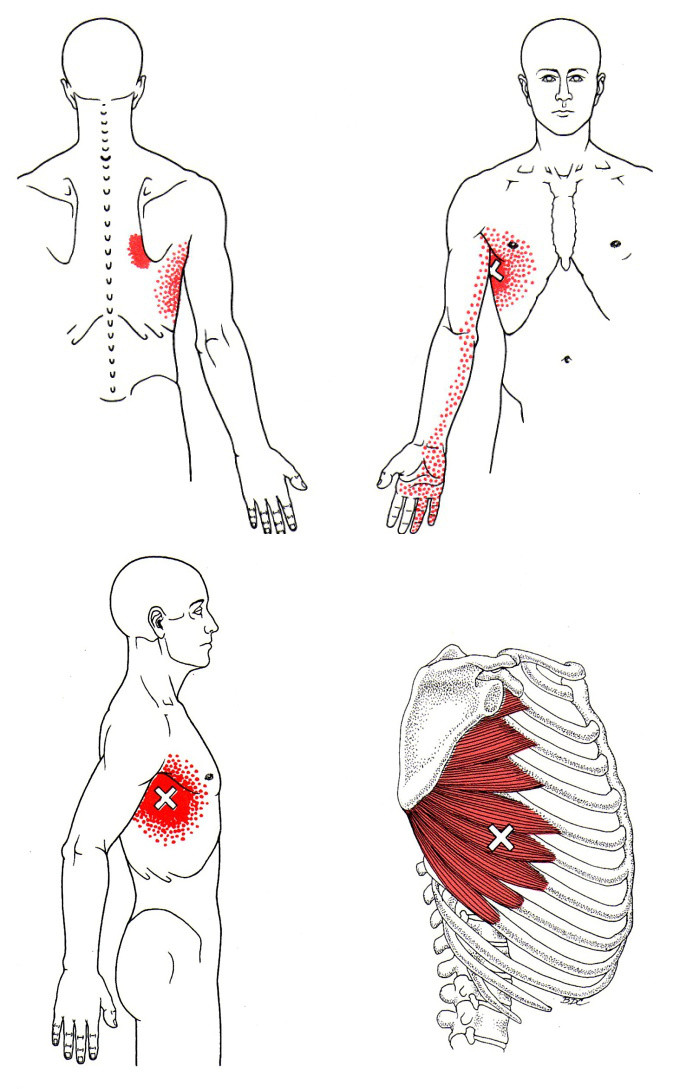Neuromuscular Therapy
Neuromuscular therapy (NMT) is a specialized form of manual therapy that focuses on the treatment of soft tissue pain and dysfunction. It is a comprehensive approach to the evaluation and treatment of musculoskeletal injuries and conditions, particularly those involving the muscles, nerves, and connective tissues.
The goal of neuromuscular therapy is to identify and release areas of myofascial trigger points, which are hyper-irritable nodules or “knots” within the muscle tissue that can cause pain and dysfunction. These trigger points can be caused by a variety of factors, including injury, overuse, poor posture, and stress.
Neuromuscular therapy involves the use of deep tissue massage, trigger point release, and other manual techniques to address these trigger points and alleviate pain and dysfunction. It may also involve the use of stretching, strengthening exercises, and other modalities to help restore normal function and range of motion.
NMT is often used to treat a wide range of conditions, including back pain, neck pain, shoulder pain, headaches, carpal tunnel syndrome, sciatica, and sports injuries. It is typically performed by a licensed massage therapist or other manual therapist who has specialized training in neuromuscular therapy techniques.
Five Elements that Cause Pain
A primary focus of NMT is to understand the formation, etiology and treatment of myofascial trigger points (TrPs). In NMT a special effort is made to locate the source of referred pain including any perpetuating influences and eliminating them while paying attention to correct negative postural and biomechanical patterns.
Neuromuscular Therapy will be used to address five elements that cause pain:
1. Ischemia: lack of blood supply to soft tissues which causes hypersensitivity to touch.
2. Trigger Points (TrP’s): highly irritated points in muscles which refer pain or sensation into other areas. These occur when nerves fire impulses at a rapid speed into an area of the body other than that which has been traumatized. Because of this the cause of severe pain may be quite removed from the actual site of pain.
3. Nerve Compression or Entrapment: Nerve compression is pressure on a nerve by cartilage or bone. Nerve entrapment is pressure on a nerve by soft tissue, usually muscle. Realigning vertebrae without treating associated soft tissues frequently treats the symptom and not the cause. Treating the surrounding soft tissues (i.e. muscle, fascia) that cause or maintain the dislocation or imbalance is imperative, and can have long lasting effects.
4. Postural Distortion: imbalance of the muscular system resulting from the movement of the body off its axis. The body will compensate in an effort to retain balance. Trauma, gravitational pressure or psychological patterning causes the soft tissue to become thicker, denser and harder. Muscle contraction, body distortion, and pain are the result. By determining why the compensation has occurred, the distorted patterns can be eliminated, proper posture restored, and associated pain diminished or eliminated in most cases.
5. Biomechanical Dysfunction: imbalance of the musculoskeletal system resulting in faulty movement patterns (i.e., poor lifting habits, bad mechanics in a golf swing or tennis stroke, computer keyboarding). Repetitive strain of certain soft tissues results in adapted movement patterns that become muscular “habits” and must be reeducated.
Comfortable Pressure is Vital to NMT Success
In physiology, Arndt-Shultz Law illustrates how pain originates in the body. It states that the body’s activity is affected by different levels of stimuli to nerve centers.
Arndt-Shultz Law – Weak stimuli activate physiological processes: very strong stimuli inhibit physiological responses.
When it comes to our body, we have a tendency to think the greater the pressure, the better the outcome will be. Deep tissue massage, or, better yet, foam rolling, is incorrectly thought of as the deepest pressure one can handle in hopes to alleviate tension in muscles, or your IT Band. One may wince at the pain of having too much pressure applied to a group of muscles with the idea that this application is helping. However, it may actually be creating an adverse affect of increased tension, as one’s nervous system begins fighting back against the pressure. This should be a sign that too much pressure on our body is far from therapeutic.
The application of Neuromuscular Therapy at Elements of Bodywork utilizes light to medium, but firm, pressure, which aids in the relief of the affected muscles. The use of pressure that is too deep and uncomfortable may create a resistance to the treatment, causing the muscle(s) to tighten, tension to increase, and a tendency for the client to hold their breath. When this occurs, muscular soreness tends to be felt 1 to 2 days longer than normal. Therefore, less but firm pressure is more beneficial than deep and overpowering. Open communication is vital to the success of this therapeutic bodywork.





